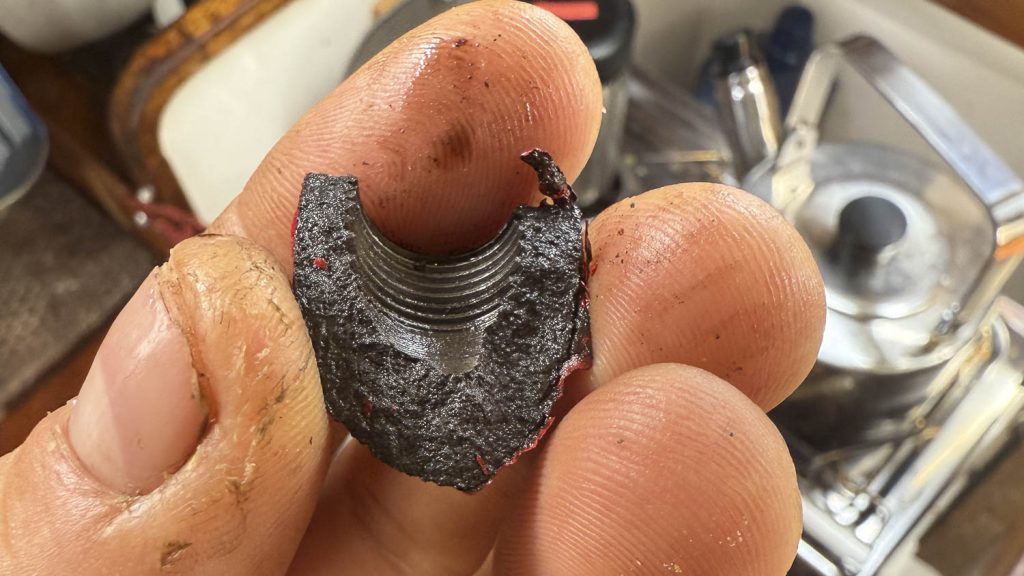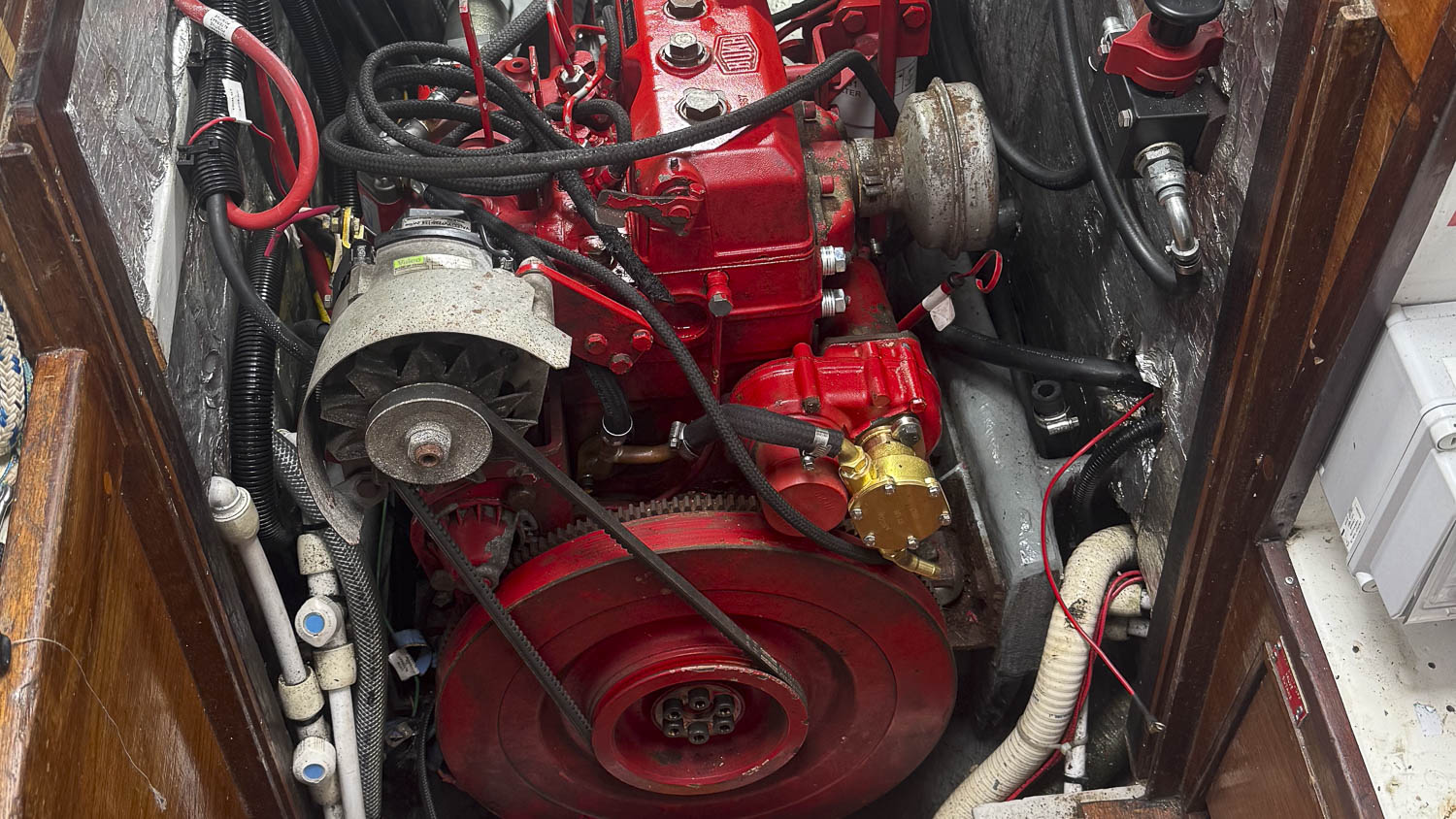The struggles I’ve had with the rebuilt engine since Lowestoft have made me think about engines in a completely new way. I’ve come to a view that there are two options. One, the engine works and is reliable; or two, you’re better off without an engine. Because I’m not brave enough, or probably sufficiently skilled, to explore the joys of pure sailing I’d decided that I need a final fix to the engine in Lowestoft because the thought of venturing across the Thames Estuary and through the English Inshore Traffic Zone1without one was deeply unattractive.
With help from a local engineer in Lowestoft we decided to lift the engine and run it up in the workshop to find the oil leaks, and after moving Trilleen up the river from the Royal Norfolk and Suffolk Yacht Club to the rather quaint but lovely little yard at Sheader Marinne, I started preparing the engine once again to lift the engine. As part of the preparation work to lift the engine I decided to check the oil pressure relief valve – because excess oil pressure can be a credible reason for oil leaks. This turned out to be an unfortunate decision because when I cracked the nut on the top of the relief valve, the part of the engine block that supported the valve also cracked. This was a heartbreaking moment since it consigned a winters, time work and money to the bin in an entirely definite way.

I was incredibly lucky however that Marine Enterprises in Dorset were able to ship me a replacement engine at very short notice and even more lucky that Northgate Marine in Lowestoft had the time to test and then fit the engine without undue delay. So it was that only a fortnight later I was able to transit back down river through the paired bridges that span the Ouse, and proceed to sea. I shaped a course straight across the thames estuary with the intent to remain outside the arrival and departure arc for the Port of London. My hope was to keep outside the majority of the shipping – and sandbanks – and that I achieved. However between the wind farms and the Sunk Traffic Separation Scheme 2 the first hours of the passage were far from restful, although I was very grateful to the excellent information from Vessel Traffic Services in the Sunk TSS.
The second half of the passage was also not terribly restful because the wind fell too light to sail and I was forced to motor to make progress. When the engine’s running in these conditions the wind vane can’t steer the boat – because the vane depends on the wind angle to ‘know’ how to correct the steering. At these times I rely on an electric tiller pilot which decided this was the precise moment it needed to develop a permanent fatal error. There followed an ordeal of hand steering intermixed with desperate attempts to sail until the wind filled back in sufficiently. By the tide had turned and it was a brutal fight to get clear round North Foreland fighting for every meter of progress.
I was very glad to finally be able to pass inshore of the start of the Channel’s notorious graveyard, the Goodwin sands, and then to identify the lights of the Ramsgate Royal Harbour glowing in the murk of an east coast night. It was past 0300 when I slid Trilleen into a very welcome berth and collapsed into my bunk for much needed rest.
- English Inshore Traffic Zone is the region of the sea which lies between the coast and the Traffic Separation Scheme (aka Ship Motorway) which carries the flood of commerce up and down the Dover Strait. ↩︎
- The Sunk TSS filters traffic which is running North South and East West round a ‘roundabout’ to increase safety among large merchant ships navigating in the area. Small craft are subject to special rules negotiating these areas and they require particular attention to navigation. ↩︎
